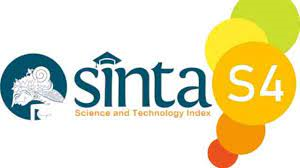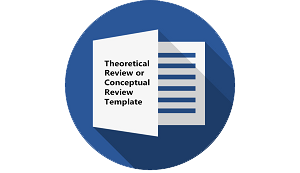Competitive Team-Based Learning Vs. Student Teams-Achievement Divisions in a Reading Class
DOI:
https://doi.org/10.30957/ijoltl.v6i1.656Keywords:
competitive team-based learning, student teams-achievement divisions, reading comprehension, cooperative learning methods, team learning, competitive worldAbstract
This study, which was conducted as part of the final thesis in the master’s degree program in English didactics, attempted to measure the effects of Competitive Team-Based Learning (CTBL), developed by Hosseini (2000, 2020 & 2021) at Mashhad Education Office in Iran, vis-à -vis Student Teams-Achievement Divisions (STAD), developed by Slavin and associates (1977) at Johns Hopkins University in the U.S., on the reading comprehension of Iranian EFL intermediate students. As an emerging innovative Cooperative Learning (CL) oriented approach, CTBL accentuates systematic implementation of teamwork in competitive environments with a democratic ambiance. The findings of some researchers on the effectiveness of this revolutionary approach to language teaching/Education have been brought to the fore for the benefit of those interested. Sixty students were selected out of 75 based on their scores in a PET reading test. Then they were randomly assigned to two groups: control and experimental. Each group consisted of thirty participants, which were divided into seven teams of four – the two remained students in each class worked in pairs. While the control group was instructed via STAD method of CL, the experimental group was instructed via Hosseini's approach to (language) teaching (i.e., CTBL). The reading comprehension test (posttest) was used at the end of the study to assess the probable progress in the reading comprehension ability of the students. The results on an independent T-test showed statistical significance at P≤0.05 level that can be attributed to the effect of CTBL on the participants' reading comprehension achievement. Probable reasons for the success of CTBL have been elaborated at length. Implications of the study as well as some suggestions to language teachers, syllabus designers, methodologies, and researchers have also found a place at the end of this paper.
Downloads
References
Cohen, E. G. (1994) Restructuring the classroom: Conditions for productive small groups. Review of Educational Research, 64(1), 10-35.
Edwards, K. J., and De Vries, D. L. (1972) Learning games and student teams: Their effects on student attitudes and achievement. New York: Johns Hopkins University.
Hatch, E. M. (Ed.). (1978) Second language acquisition: A book of readings. Rowley, MA: Newbury House.
Hosseini, S.M.H. (2020) My Liberating Approach to Teaching and the Howabouts of its Transforming Power. IJOTL-TL: Indonesian Journal of Language Teaching and Linguistics, 5(3), 155-168. DOI: 10.30957/ijotl-tl.v5i3.634. [Online] available:
https://ijotl-tl.soloclcs.org/index.php/ijoltl/article/view/634 [10 November 2020].
Hosseini, S.M.H. (2021). My Liberating Approach Edu-Political Theories . European
journal of Education Studies. 2021, 8 (1), 313-336.
[Onliine] available at https://oapub.org/edu/index.php/ejes/article/view/3541
Johnson, D., and Johnson, R. (1999) Learning together: Cooperative, competitive and individualistic learning. Massachusetts: Allyn andBacon.
Kagan, S. (1989) Cooperative Learning. Resources for teachers. CA: Resources for Teachers.
Khadidja K. (2010) The effect of classroom interaction on developing the learner’s speaking Skill. Unpublished MA thesis- Mentouri university.
Liang, T. (2002) Implementing cooperative learning in EFL teaching: Process and effects. Unpublished PhD dissertation. National Taiwan
Normal University. [Online] Av ailable:
http://www.Uefap.com/index.htm [10 November 2020].
Long, M. H., and Porter, P. A. (1985) Group work, inter language talk, and second language acquisition. TESOL Quarterly, 19, 207–228.
Mackey, A. (2007) The conversational interaction in second language acquisition. Oxford: Oxford University Press.
McCafferty, E. (Eds.). (2006) Cooperative learning and second language teaching. New York: Cambridge University Press.
Mohseny, A. and Jamour, F. (2012) The Impact of Student Team Achievement Division on Vocabulary Learning of Iranian EFL Pre-Intermediate Learners, ELT Voices-India, 2(6), 20-32.
Nederhood, B. (1986) The effects of student team learning on academic achievement, attitudes towards self and school, and expansion of friendship bonds among middle school students. Dissertation Abstract International, 47(4), 1175A. (DARR OF LIT).
Oxford, R. (1997) Cooperative learning, collaborative learning and interaction: Three communicative strands in the language classroom. Modern Language, 81(4), 443-456.
Palincsar, A. S., and Brown, A. L. (1986) Interactive teaching to promote independent learning from text. The Reading Teacher, 39(8), 771–77.
RimaniNikou, F., Bonyadi, A., and Ebrahimi, K. (2014) The Effect of Student Team-Achievement Division (STAD) on Language Achievement of Iranian EFL Students across Gender, European Online Journal of Natural and Social Sciences,3(4), 936-949.
Sharan, Y. and Sharan, S. (1990) Group investigation expands cooperative learning. Educational Leadership, 47(4), 17-21.
Slavin, R. (1978) Student teams and comparison among equals: Effects on academic performance and student attitudes. Journal of Educational Psychology, 70, 532-538.
Slavin, R. E. (1977) Student teams achievement Divisions: Effects on Academic Performance, mutual Attraction, and Attitudes. Baltimore, MD: John Hopkins University.
Slavin, R. E. (1995) Cooperative learning: Theory, research, and practice. Massachusetts: Allyn and Bacon.
Slavin, R. E., Leavey M. B. and Madden, N. A. (1986) Team accelerated instruction: Mathematics. Watertown, MA: Charlesbridge.
Saidah, S. (2021). Discovery Learning to Improve English Achievement: A Classroom Action Research to the Seventh Graders of SMPN 1 Kedung Jepara. IJOTL-TL: Indonesian Journal of Language Teaching and Linguistics, 5(2), 109-122. DOI: 10.30957/ijotl-tl.v5i2.622. Available at https://ijotl-tl.soloclcs.org/index.php/ijoltl/article/view/622/598
Stevens, R., Slavin, R.E. and Farnish, A.M. (1989). A Cooperative Learning Approach to Elementary Reading and Writing Instruction: Long-Term Effects. Baltimore, Md.: The Johns Hopkins University.
Vygotsky, L. (1978) Mind in society: The development of higher psychological processes. Cambridge: Harvard University Press.
Zarei, A.A. and Keshavarz, J. (2012).On The Effects of Two Models of Cooperative Learning on EFL Reading Comprehension and Vocabulary
Learning, MJLTM, 5(4), 11-21.
Downloads
Published
How to Cite
Issue
Section
License
Authors who publish with this journal agree to the following terms:
- Authors retain copyright and grant the journal right of first publication with the work simultaneously licensed under a Creative Commons Attribution-ShareAlike 4.0 International License that allows others to share the work with an acknowledgement of the work's authorship and initial publication in this journal.
- Authors are able to enter into separate, additional contractual arrangements for the non-exclusive distribution of the journal's published version of the work (e.g., post it to an institutional repository or publish it in a book), with an acknowledgement of its initial publication in this journal.
- Authors are permitted and encouraged to post their work online (e.g., in institutional repositories or on their website) prior to and during the submission process, as it can lead to productive exchanges, as well as earlier and greater citation of published work (See The Effect of Open Access).












